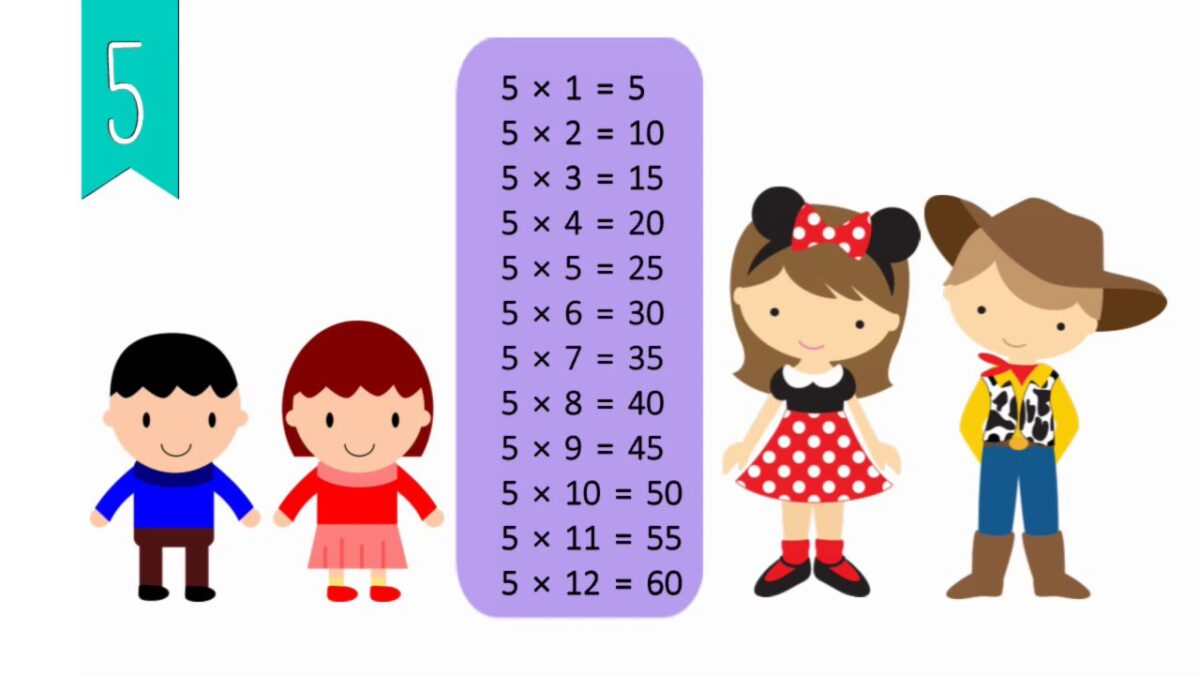Multiplication is one of the four basic operations of arithmetic. From shopping to cooking to paying bills, we need multiplication for several things in life. When it comes to learning addition, most kids take to it like ducks to water. They usually have a bit of difficulty with subtraction but tend to learn that fairly quickly too. But, most kids struggle when they transition from addition and subtraction to multiplication and division.
One of the main reasons kids struggle with these concepts is that educators and parents rush through the lessons. And sometimes, they are taught the wrong concepts, which makes it all the more confusing. So, the first step to make multiplication more engaging is to give children more time to get acquainted with the concept. When they are taught the basics of multiplication in the right way, it becomes less daunting. One of the best ways to help children learn multiplication is to teach them multiplication tables for kids.
Learning the multiplication tables makes it easier for children to learn how to multiply numbers. Additionally, it helps them perform fast calculations easily. But how do you help little children learn the times tables? Here are some tips you can follow to help your little ones learn the multiplication table.
6 Tips To Help Children Learn The Multiplication Table
- Start simple: Like with everything else, children have to be eased into learning multiplication tables. Start by teaching them the simpler times tables like the multiplication table of 1, 2 times table, 10 times table etc. These multiplication tables have simple patterns, which helps kids learn quickly and easily.
- Relate it to addition: Multiplication is nothing but repeated addition. Most children are confident when it comes to addition. Once you teach children this concept, they’ll understand the concept quickly. For example, to get the multiples of 2, ask your child to add 2 repeatedly. 2 x 2 = 2+2 = 4.
- Multiplication table chart: One of the easiest ways to help children learn the multiplication table is to memorize it using a chart. Make a multiplication table chart along with your child and hang it in a place where your child sees it often. Read the times table often with your child until they have it memorized. Then, quiz them on and off to test their knowledge.
- Commutative property: Like addition, multiplication is also commutative, which means the product remains unchanged even if the order of the factors are changed. For example, 3 x 8 = 24 and if you change it to 8 x 3, the answer is still 24. Teaching children this will help them figure out the multiplication tables for larger numbers easily.
- Multiplication games: Most kids love games, so incorporating games into their multiplication lessons will help them learn better. Additionally, they’ll stay engaged in the learning process and try harder in a game. Try multiplication games using candies, toys, fruits etc to teach them how to multiply easily. You can also try multiplication hopscotch or snakes and ladders to help your kid learn to multiply easily.
- Underlying pattern: Kids usually learn the times tables for 0, 1, 2, 5 and 10 easily. But they struggle with multiplication tables of the other numbers. One trick that helps them learn the tables for these numbers is to spot the underlying pattern.
For example, consider the 8 times table.
8 x 1 = 0 8
8 x 2 = 1 6
8 x 3 = 2 4
8 x 4 = 3 2
8 x 5 = 4 0
8 x 6 = 4 8
8 x 7 = 5 6
8 x 8 = 6 4
8 x 9 = 7 2
8 x 10 = 8 0
Look at the multiples of 8, you’ll observe a pattern in the ones column. The numbers are in the sequence 8, 6, 4, 2, 0, 8, 6, 4, 2, 0. While the numbers in the tens column are in the sequence 0, 1, 2, 3, 4, 5, 6, 7 and 8. Remembering this pattern will help children remember the table of 8 easily.
Once you teach them to identify and remember the underlying patterns in the times tables, they’ll learn the multiplication tables easily.
Learning the multiplication table is an important skill that children should master. Use these tips to help your child master the multiplication table quickly.
Related posts

Recent Posts
- The Future of Rummy: Trends and Predictions April 16, 2024
- 6 Questions to Ask Your Hardwood Flooring Installer March 28, 2024
- Inside Rinat Akhmetov Foundation’s Blogger Camp for Ukraine’s Young War Survivors February 29, 2024
- Driving Success: Exploring the Benefits of Golf Simulators for Businesses February 23, 2024
- UNLOCKING EFFICIENCY: YOUR GUIDE TO INDUSTRIAL EQUIPMENT MAINTENANCE November 8, 2023
- SELECTING THE RIGHT PUMP MATERIAL: FINDING THE PERFECT FIT FOR YOUR APPLICATION October 27, 2023
- Combining Fundamental and Technical Analysis on TradingView August 26, 2023



Stay connected